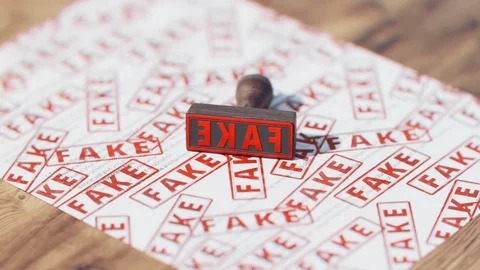Best of Johannesburg
Don’t Be Fooled by Screenshots: How to Spot a Fake ‘Leaked’ Document in South Africa 2025

Something doesn’t add up: the screenshot that should’ve betrayed the truth
In today’s information age, a screenshot of a so-called leaked document can spread across WhatsApp groups and social feeds before anyone realises it may be a fake. But behind what looks like a smoking-gun leak often lies a carefully constructed illusion. In South Africa, where the stakes of leaked corporate or government documents can be high, asking “Is this real?” is more than prudent. It’s essential.
Here’s how you can dig a little deeper and give yourself some confidence about what you’re seeing.
See the visual clues first
Start with what your eyes can pick up: the fonts, the logos, and the quality. Did the text shift halfway through the page in a different font size? Are some letters fuzzy when you zoom in, while other parts remain sharp? These are classic signs that sections were edited separately.
Is alignment off? Perhaps headers or stamps sit a little too high or low compared to other pages. Official seals or watermarks that look flat and uniform, rather than embossed or uneven, could be added digitally.
Poor image quality also tells a story. Many “leaks” are shown only as screenshots, not original files. That means compression, pixelation, or blurriness can hide manipulation. In forensic terms, if somebody wanted to fake a doc on a phone, they might cut together bits from several sources.
By paying attention to these visual inconsistencies, you’ll often uncover red flags long before you attempt anything more technical.
Go under the hood: metadata and digital forensics
If you have the actual file, not just a screenshot, your chances of verification improve dramatically. Metadata is effectively the document’s digital fingerprint: creation date, editing software, authorship, and layers hidden inside a PDF or image. For example, if a supposedly government-issued document was edited with a consumer-level photo app, that alone is suspicious. Metadata analysis reveals these details.
PDFs have layers, too: a copied text layer laid on an image background may signal a tampered document. If the file’s modification date is later than the event it describes, that is another huge red flag.
Recently, forensic experts have emphasised that metadata “crumbs” can uncover hidden manipulation even when the visible part looks convincing.
Know your context and content
Visual tricks or data trails aren’t everything. You also need to ask: Does the document make sense? Do the names, addresses, and organisations mentioned check out?
Look for fonts that don’t match the expected style guidelines of the issuer. Check whether the dates align with what you already know of the timeline. Run a few unique phrases through search engines; often, fake documents are built by piecing together bits of real documents found online.
Watch for what’s missing, too. In many genuine leaks, the folder structure is messy, and files are incomplete. But if what lands on your phone looks too neat and “cut-and-paste ready,” that suggests design rather than accident.
In South Africa, the context matters further: certain registers and databases are public, and for classified or official documents, sharing or possession may be illegal under local laws.
Investigate the source
Who sent it? Why now? A real leak often has messy provenance. A source who just dumps a clean, perfectly formatted screenshot might not be operating in good faith.
Always ask whether the original file is available or only a screenshot. A screenshot lacks the full digital history and is easier to fabricate. In courts and formal investigations, a simple screenshot alone often carries little weight because the chain of custody is unclear.
Even social media reactions matter. In South Africa, we have seen instances where “leaked” docs went viral only to be quietly debunked later by investigators, noting inconsistent formatting or suspicious metadata. For readers, it pays to wait a little, investigate a little, and not share wildly without checks.
Why this matters in 2025
Forgery techniques just keep getting smarter. AI-assisted image and document generation can now produce near-perfect fakes that defeat simple visual checks. Metadata can be stripped or manipulated. That makes a layered approach (visual, technical, contextual, and source investigation) the only sensible method.
A recent industry review highlighted that in 2025, organisations preparing for fraud must move beyond simple manual checks and adopt a layered verification framework. Technology helps, but human scrutiny remains vital.
In our local media landscape, a viral fake document can influence public opinion, shake market confidence, or even spark legal scrutiny. That makes it even more important for us in South Africa to apply verification habits.
Before you share: take a breath and think twice
If a “leaked document” drops on your feed and you’re tempted to forward it, pause. Take a moment to zoom in on visual oddities. Think about whether the timeline, names, and context add up. Ask whether there’s a full digital file or just a screenshot.
In Joburg, Cape Town, or any South African context where “leak culture” is real and the reputational stakes are high, doing a quick authenticity check is not just prudent. It’s responsible.
Because in 2025, a credible screenshot might not be credible at all.
Also read: Why Global Events Still Shape Everyday Life in South Africa 2025
Follow Joburg ETC on Facebook, Twitter, TikT
For more News in Johannesburg, visit joburgetc.com
Featured Image: Shutterstock



























